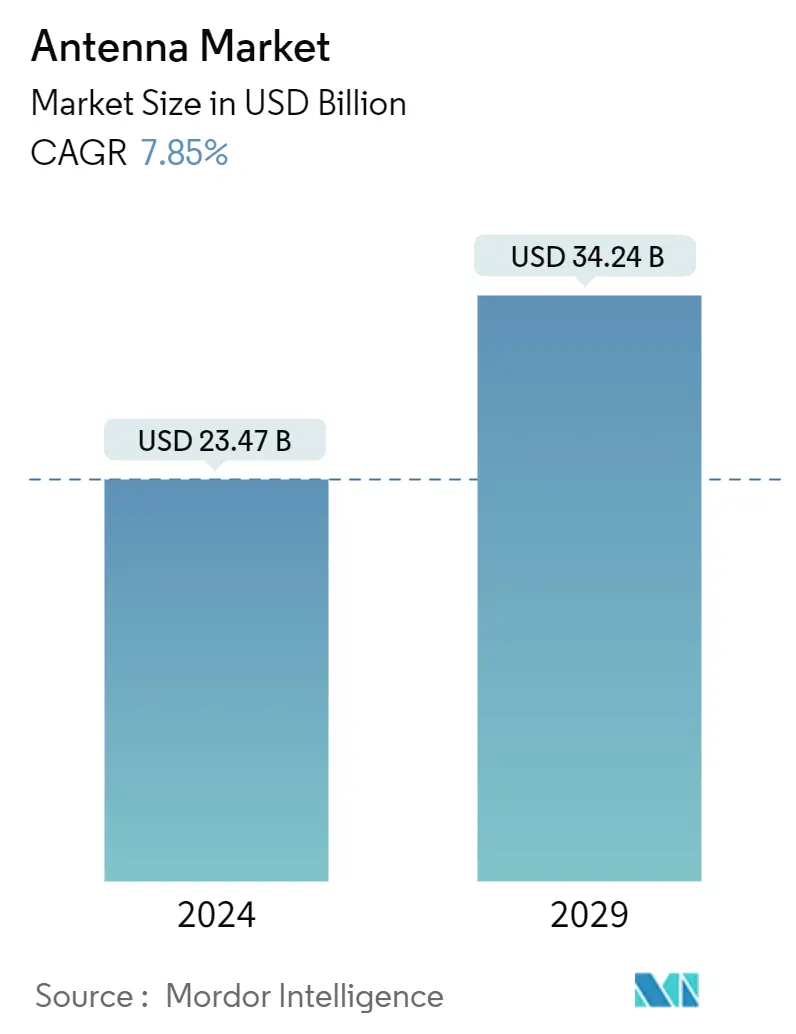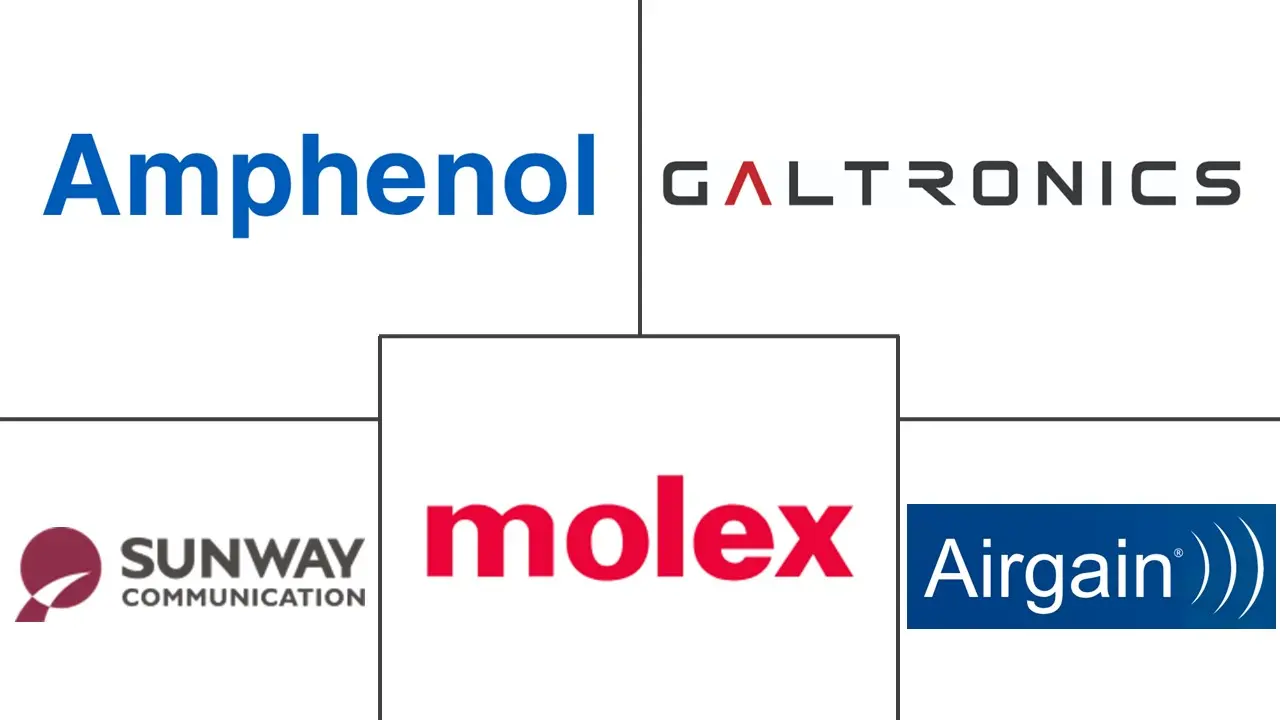Market Size of Antenna Industry

| Study Period | 2019 - 2029 |
| Market Size (2024) | USD 23.47 Billion |
| Market Size (2029) | USD 34.24 Billion |
| CAGR (2024 - 2029) | 7.85 % |
| Fastest Growing Market | Asia Pacific |
| Largest Market | Asia Pacific |
Major Players
*Disclaimer: Major Players sorted in no particular order |
Need a report that reflects how COVID-19 has impacted this market and its growth?
Antenna Market Analysis
The Antenna Market size is estimated at USD 23.47 billion in 2024, and is expected to reach USD 34.24 billion by 2029, growing at a CAGR of 7.85% during the forecast period (2024-2029).
- The market is expected to observe significant growth over the forecasted period due to the rise in wireless communication, the rise in internet usage, the development of smart cities, advanced driver assistance systems (ADAS) vehicles, and many more. To cater to those needs, the players in the market are developing new products to capture the market share.
- The antenna market is showing upward growth due to the increasing usage of wireless connectivity solutions due to digital transformation. During the forecast period, the antenna market is expected to be driven by the growing use of wireless systems, wireless communications, and the increased use of antennas in consumer electronic products, such as laptops, tablets, wearables, smartphones, and other devices.
- The rise in the adoption of satellite communications is expected to drive the antenna market. One of the key aspects driving the growth of the Antenna market is the expansion of the space sector. The market is expanding as a result of an increase in space exploration missions, cost-effective satellite launch operations, increased demand for satellite-assisted combat, and enhanced small satellite deployment. The United States Space Force (USSF) operates the USD 6.8 billion satellite control network (SCN) for military warfighters, which consists of an international ground network of fixed antennas at seven locations to command more than 190 military and government satellites.
- Antennas are essential for providing wireless connectivity in smart cities. They enable efficient and reliable communication between devices and infrastructure components such as sensors, cameras, streetlights, and vehicles. Antennas are used to establish wireless networks and enable data transfer, facilitating real-time monitoring and control of different systems. The rise in smart cities is expected to drive the studied market.
- On the contrary, antennas require intricate designs, especially when developing high-performance and multi-band antennas. Achieving the desired performance characteristics within the constraints of the stamping process can be challenging. Further, the choice of stamping material can significantly impact antenna performance. Finding the right material that balances electrical conductivity, mechanical strength, and cost can be challenging.
- Post-pandemic, the players in the market are developing new sustainable products due to the rise in the demand from customers. For instance, in January 2023, Toppan designed an eco-friendly near-field communication (NFC) tag label that utilizes paper material as the substrate for the antenna rather than conventional polyethylene terephthalate (PET) film. The sales of the new tag label have been launched, with Europe anticipated to be a favorable market due to the high level of environmental consciousness. In addition to reducing plastic consumption to zero by switching to paper, a new circuit fabrication technology ensures sufficient communication performance as an NFC device.
